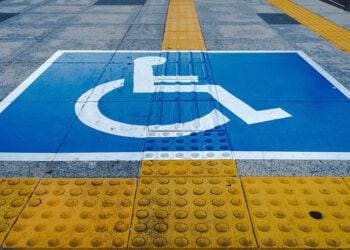A new report card is out on how company websites provide digital accessibility for people with disabilities — and the results aren’t great.
The analysis by AudioEye, which was informed by scans of more than 2 million web pages across 40,000 enterprise and upper-mid market domains, revealed that the average page has 37 elements that fail one of the measures established by the Web Content Accessibility Guidelines (WCAG), the international standard for web accessibility. Further, 69% of pages had at least one image with inadequate or missing alt text, a practice that helps visually impaired users understand images on sites.
While digital accessibility doesn’t yet have the regulatory cache of physical access, the DOJ earlier this year issued proposed website accessibility regulations under Title II of the Americans with Disabilities Act (ADA) that would apply to state and local government websites and apps. Once finalized, observers expect the regulations to serve as a blueprint for corporations as well.
As such, AudioEye’s findings could spell trouble for companies’ abilities to comply with the eventual regulations considering that the analysis found that all 2 million-plus of the pages scanned had at least one accessibility barrier.













